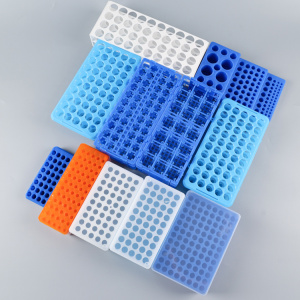How to properly use 96-well PCR plate

The PCR plate is available in transparent and milky white, among which milky white is more suitable for new fluorescence quantitative PCR instruments (such as Bole CFX series, ABI 7500fast and above models, Roche 480 series) that collect fluorescent signals at the top, but if the fluorescence quantitative PCR instrument is the bottom light source , you should choose transparent.
According to the skirt design, the PCR plate can be divided into three design modes: no skirt, half skirt and full skirt. Different manufacturers' fluorescence quantitative PCR instruments will design different cut corners or edge protrusions. Please choose the most suitable PCR instrument. board.
The PCR plate is divided into 100ul volume (low plate) and 200ul volume (high plate), according to the different selection of the model, choose different height orifice plates to avoid the damage to the machine caused by the height error and uneven heating leading to data distortion.
When using a 96-well plate for real-time PCR experiments, it is recommended to use an optical film to seal the reaction wells. The correct sealing method is: first press the film along the longitudinal direction of the 96-well plate, and then press along the edge of the plate in the transverse direction to seal it. The specific method is shown in the figure below:
After the sample is added, some small droplets will splash on the tube wall, and there will be some air bubbles in the reaction system, which needs to be centrifuged to remove the wall-hanging droplets and air bubbles. Please use a dedicated microplate centrifuge to solve the above problems.
The PCR plate is a one-time consumable product, and it is produced in one time. It is not recommended to cut it and use it, which may increase the experimental error, and cannot be cleaned or partially reused. Don't worry about the subsequent analysis of the experiment in order to save a little money.
Summary: How to correctly use the 96-well PCR plate, Yongyue Medical will introduce these. After reading this article, you should have a basic understanding and understanding. I believe everyone understands it! In general, I hope everyone has helped.
General consumables: deep-well plates, 96-well silica pads, tips, sealing membranes, glass slides, test tubes, measuring cups, reagent tanks, centrifuge tubes, pipettes, etc.
Cell culture: Serum bottle series, cell culture slides, cell spatula/scraper/filter, pipette, cell culture dish/plate/bottle, culture chamber.
Nucleic acid extraction consumables: pipette tip series, deep well plate and magnetic sleeve series, PCR tube/PCR plate series, extraction tube.
Reagent packaging: wide mouth reagent bottle, narrow mouth reagent bottle, storage tube, kit, serum, protein, antibody/antigen, etc.
Virus sampling: Disposable virus sampler/sampler, saliva collector, etc.
——



